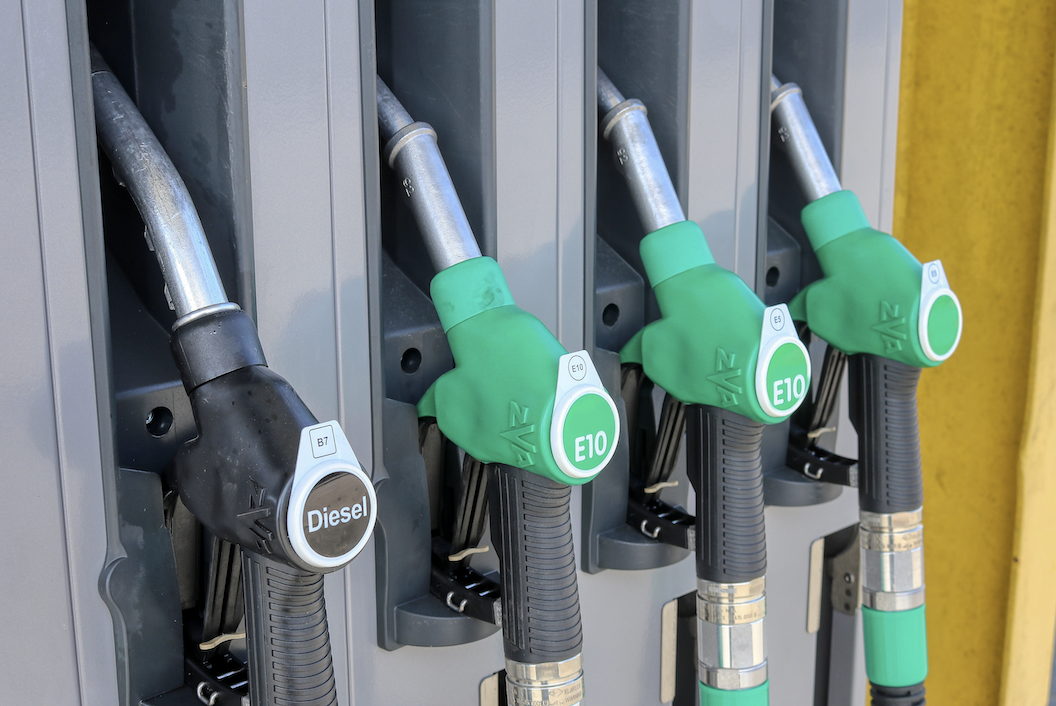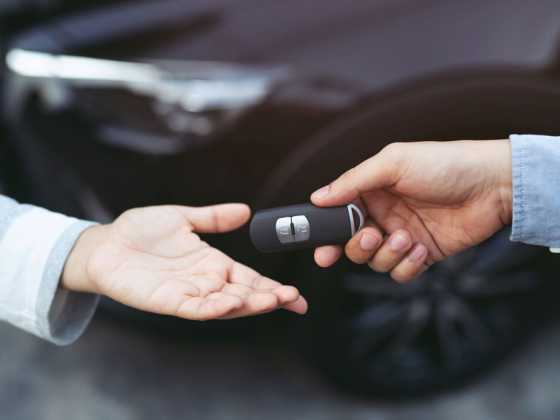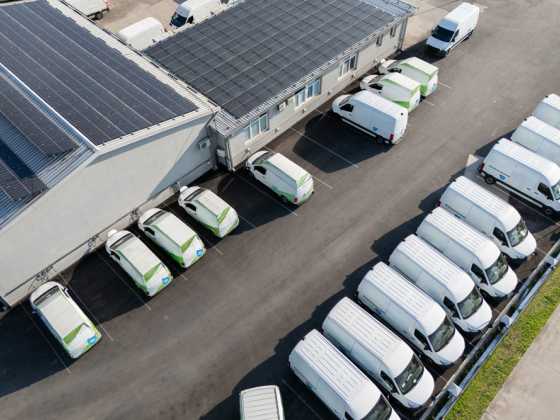Getting ready for E10 petrol

E10 petrol – which is petrol blended with up to 10 per cent renewable ethanol – will be rolled-out in forecourts from September. Here’s what you need to know about the greener fuel
E10 petrol – which is petrol blended with up to 10 per cent renewable ethanol – will be rolled-out in forecourts from September, and the government has started a campaign to raise awareness of the greener fuel and to encourage motorists to check their vehicle is compatible with the fuel.
The introduction of E10 will see renewable ethanol in petrol double from the current petrol blend E5, which contains no more than five per cent ethanol.
E10 petrol can potentially cut transport CO2 emissions by 750,000 tonnes a year – equivalent to the annual uptake of a forest the size of the Isle of Wight.
A small number of older vehicles, including classic cars and some from the early 2000s, will continue to need E5 fuel, which is why supplies of E5 petrol will be maintained in the super petrol grade. The DfT are advising motorists to use the new E10 compatibility checker to see if their vehicle is compatible.
As well as playing a part in the UK’s decarbonisation plans, the rollout of E10 petrol will boost job opportunities across the country. So far, up to 100 jobs in the north east of England have been secured, following the reopening of AB Sugar’s Vivergo plant, and increasing production at existing biofuel plants, such as Ensus.
Here’s what you need to know about the new fuel.
What makes E10 greener?
E10 petrol contains up to 10 per cent renewable ethanol, which will help to reduce carbon dioxide (CO2) emissions associated with petrol vehicles and tackle climate change. Petrol in the UK currently contains up to five per cent renewable ethanol (known as E5).
E10 petrol is already widely used around the world, including across Europe, the US and Australia. It has also been the reference fuel against which new cars are tested for emissions and performance since 2016.
CO2 is one of the greenhouse gases that contribute to climate change and the main benefit of E10 petrol is that it reduces overall levels of CO2-based vehicle emissions.
By blending petrol with up to 10 per cent renewable ethanol, less fossil fuel is needed, helping us reduce carbon emissions and meet climate change targets.
The introduction of E10 petrol at UK forecourts could cut transport CO2 emissions by 750,000 tonnes a year – the equivalent of taking 350,000 cars off the road, or all the cars in North Yorkshire.
Renewable fuel blends, such as E10 petrol, are generally introduced to reduce overall CO2 emissions. They have little impact on emissions associated with air quality and public health.
The production of renewable ethanol for blending with fossil petrol also results in valuable by-products, including animal feed and stored CO2.
Fuel economy
Using E10 petrol can slightly reduce fuel economy (the number of miles you are able to drive on a gallon of fuel). You may see a reduction of around one per cent, but it is unlikely to be noticeable in everyday driving.
Other factors – such as your driving style or driving with under-inflated tyres or a roof rack – have a much more significant impact on fuel economy than using E10 petrol.
Compatibility
Around 95 per cent of petrol-powered vehicles on the road are compatible with E10 petrol and this figure is increasing all the time.
All new cars manufactured since 2011 are compatible with E10 petrol, and most cars and motorcycles manufactured since the late 1990s are also approved by manufacturers to use E10.
Some vehicles however, may not be compatible with E10 petrol. These include classic, cherished and older vehicles, some specific models, particularly those from the early 2000s, and some mopeds, particularly those with an engine size of 50cc or under.
You can check whether your vehicle is approved to use E10 petrol using the government’s E10 vehicle checker at gov.uk/E10checker, which covers cars, motorcycles and mopeds.
If your brand or model is not listed, consult your manual or contact your vehicle or equipment manufacturer. Vehicle MOT garages or workshops may also be able to advise on cars, vans and motorcycles. If in doubt, continue to use E5 (97+ octane) petrol.
Classic vehicles
Many manufactures of classic cars are not listed in the vehicle checker. Where older brands are no longer trading, specific information on vehicle compatibility cannot be given.
Owners of vehicles not listed in the vehicle checker should continue to use E5 (97+ octane) petrol, which will remain available in the ‘super’ grade.
Classic vehicle owners’ clubs and associations may have further information, as may garages.
If your vehicle is not compatible with E10 petrol, continue to use E5 petrol in the ‘super’ grade (97+ octane), which will remain available at many larger filling stations. Make sure you check the label before you fill up.
What to do if you put E10 petrol in a non-compatible vehicle
Using a single tank of E10 petrol in a vehicle that is not compatible should not be a major problem. Just make sure you fill up with the correct E5 (‘97+ octane) petrol grade next time.
Unlike putting petrol into a diesel engine, you shouldn’t need to drain the tank. On a one-time basis, your vehicle will not suffer engine damage as a result. Prolonged use of E10 petrol in a non-compatible vehicle, however, may cause harm and is not recommended.
If your vehicle is compatible with E10 petrol, there’s no reason you can’t mix the 2 grades of petrol (E5 97+ and E10 95+). It’s perfectly safe to mix them in the same tank or fill up with E5 if E10 is not available.
Boats, aircraft and other petrol-powered equipment
Some other petrol-powered equipment may not be compatible with E10 petrol including boats and petrol-powered garden equipment or machinery, such as lawnmowers and chainsaws.
Owners and operators should check their manual or ask the manufacturer or dealer before using E10.
Owners of light aircraft that currently use E5 petrol known as MOGAS should continue to use E5 petrol unless expressly approved by their manufacturer or regulating body.
Availability
E10 is becoming the standard petrol grade in Great Britain, meaning E10 petrol will be available at almost all petrol stations across England, Scotland and Wales.
Petrol stations that offer two grades of petrol will stock E10 (95 octane) and E5 (97+ octane) petrol.
E5 (97+ octane petrol with no more than five per cent renewable ethanol), however, will remain available at filling stations that sell two grades of petrol.
Some rural, remote or very small filling stations may sell only either E5 or E10 petrol as standard.
Labelling
At the petrol station, a circular ‘E10’ or ‘E5’ label will be clearly visible on both the petrol dispenser and nozzle, making it easy to identify the correct petrol to use.
New vehicles manufactured from 2019 onwards should have an ‘E10’ and ‘E5’ label close to the filler cap showing the fuel(s) they can use.
If your vehicle or equipment doesn’t have this label, you can check their compatibility using the E10 vehicle checker. If you’re still unsure, consult your manual or contact the vehicle manufacturer.
Driving in clean air zones
Using E10 fuel will not affect whether you are able to drive in, or have to pay to enter, a clean air zone (CAZ), low emission zone (LEZ) or ultra-low emission zone (ULEZ). This is determined by your car’s Euro emissions standard and not by the fuel used.






